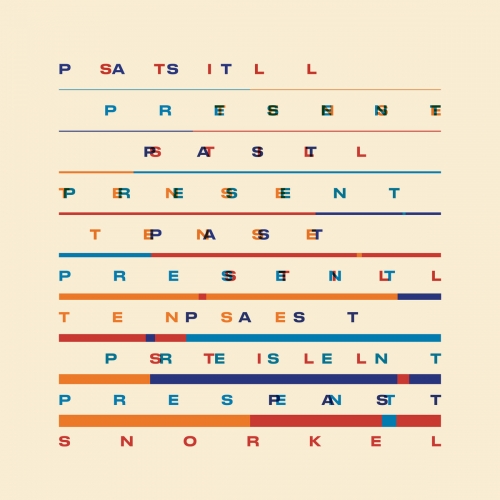Peter Dijkstra - Poulenc: Figure Humaine (2011) [Hi-Res]

Artist: Swedish Radio Choir, Peter Dijkstra
Title: Poulenc: Figure Humaine
Year Of Release: 2011
Label: Channel Classics Records
Genre: Classical
Quality: FLAC (tracks, booklet) [192kHz/24bit]
Total Time: 1:01:36
Total Size: 1.6 GB / 198 MB
WebSite: Album Preview
Tracklist:Title: Poulenc: Figure Humaine
Year Of Release: 2011
Label: Channel Classics Records
Genre: Classical
Quality: FLAC (tracks, booklet) [192kHz/24bit]
Total Time: 1:01:36
Total Size: 1.6 GB / 198 MB
WebSite: Album Preview
1. Peter Dijkstra & Swedish Radio Choir – Mass in G Major: Kyrie (03:56)
2. Peter Dijkstra & Swedish Radio Choir – Mass in G Major: Gloria (04:04)
3. Peter Dijkstra & Swedish Radio Choir – Mass in G Major: Sanctus (02:35)
4. Peter Dijkstra & Swedish Radio Choir – Mass in G Major: Benedictus (03:54)
5. Peter Dijkstra & Swedish Radio Choir – Mass in G Major: Agnus Dei (05:17)
6. Peter Dijkstra & Swedish Radio Choir – Sept Chansons: I. La Blanche Neige (01:13)
7. Peter Dijkstra & Swedish Radio Choir – Sept Chansons: II. Peine Défigurée (01:48)
8. Peter Dijkstra & Swedish Radio Choir – Sept Chansons: III. Par une Nuit Nouvelle (01:31)
9. Peter Dijkstra & Swedish Radio Choir – Sept Chansons: IV. Tous les Droits (02:54)
10. Peter Dijkstra & Swedish Radio Choir – Sept Chansons: V. Belle et Ressemblante (02:23)
11. Peter Dijkstra & Swedish Radio Choir – Sept Chansons: VI. Marie (02:22)
12. Peter Dijkstra & Swedish Radio Choir – Sept Chansons: VII. Luire (02:13)
13. Peter Dijkstra & Swedish Radio Choir – Un Soir de Neige: I. De Grandes Cuillers de Neige... (01:29)
14. Peter Dijkstra & Swedish Radio Choir – Un Soir de Neige: II. La Bonne Neige... (01:32)
15. Peter Dijkstra & Swedish Radio Choir – Un Soir de Neige: III. Bois Meurtri... (02:32)
16. Peter Dijkstra & Swedish Radio Choir – Un Soir de Neige: IV. La Nuit la Froid la Solitude... (01:18)
17. Peter Dijkstra & Swedish Radio Choir – Figure Humaine: I. De Tous les Printemps du Monde... (03:16)
18. Peter Dijkstra & Swedish Radio Choir – Figure Humaine: II. En Chantant les Servantes s'Élancent (02:17)
19. Peter Dijkstra & Swedish Radio Choir – Figure Humaine: III. Aussi bas Que le Silence... (01:47)
20. Peter Dijkstra & Swedish Radio Choir – Figure Humaine: IV. Toi Ma Patiente... (02:09)
21. Peter Dijkstra & Swedish Radio Choir – Figure Humaine: V. Riant du Ciel et des Planètes (01:04)
22. Peter Dijkstra & Swedish Radio Choir – Figure Humaine: VI. Le Jour m'Étonne et la Nuit me Fair Peur... (01:49)
23. Peter Dijkstra & Swedish Radio Choir – Figure Humaine: VII. La Menace Sous le Ciel Rouge... (02:48)
24. Peter Dijkstra & Swedish Radio Choir – Figure Humaine: VIII. Liberté (05:17)
To issue a CD of Poulenc’s most important choral work is to make a huge statement, and to take something of a risk. Why does one do it? Aren’t there enough recordings already? Having said that, in my case it’s simply dire necessity. This work is so beautiful, so impressive, and so important to the canon of twentieth-century choral music, that I cannot resist having a say of my own. I do believe that Poulenc´s 12-part Figure humaine is the most beautiful and impressive a cappella choral work that I know. The poet Eluard and composer Poulenc formed a perfect match. Eluard’s poignant and sinister surrealistic texts are very moving, and their wonderfully expressive language depicts the horrors of the Second World War. It is without doubt a harrowing work, with a pièce de résistance to end: the eighth and final movement Liberté. In the most beautiful words, it expresses the omnipresent urge for liberty. Poulenc’s setting is simply wonderful, with a gigantic buildup to the concluding, ultimate cry of LIBERTÉ! It is a great joy to perform this sort of music with my Swedish Radio Choir. The ensemble is a very strong group, and most eager to stretch its boundaries. The strength of the group is not merely the sum of its individual qualities. At the moment when these qualities merge into one, the group develops still further, and the ensemble attains a higher elevation. However important blending of the sound may be, it may not be at the expense of individual colour and personality. Choirs are frequently recorded from a considerable distance, perhaps to improve the blend. I often find the resulting sound to be distant, and detrimental to the clarity of the text. The recording technique of Channel Classics seeks to establish a synthesis, combining directness and clarity with spatial effect. This is exactly my own approach to choral timbre: the choir must achieve the greatest unity and blend, but also allow space for individual colour. It is at such moments that the listener feels personally involved, and the music gains a human aspect. I am convinced that this is the sound Poulenc had in mind when he wrote Figure humaine. Peter Dijkstra




![Yasuhiro Usui, Ryoko Ono and Taro Tatsumaki - The House Concert Live Collection, Vol. 55: Yasuhiro Usui (Live at 3rd Floor, Artist House, Daehak-ro, Seoul, 7/12/2015) (2025) [Hi-Res] Yasuhiro Usui, Ryoko Ono and Taro Tatsumaki - The House Concert Live Collection, Vol. 55: Yasuhiro Usui (Live at 3rd Floor, Artist House, Daehak-ro, Seoul, 7/12/2015) (2025) [Hi-Res]](https://www.dibpic.com/uploads/posts/2025-12/1765791289_rchn1y2nh7yfb_600.jpg)
![Tomasz Stańko - Unit (Polish Radio Sessions vol. 2/6) (2025) [Hi-Res] Tomasz Stańko - Unit (Polish Radio Sessions vol. 2/6) (2025) [Hi-Res]](https://www.dibpic.com/uploads/posts/2025-12/1765790300_cover.jpg)


